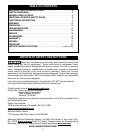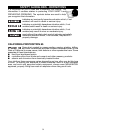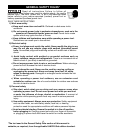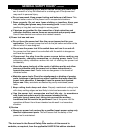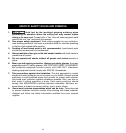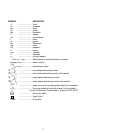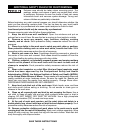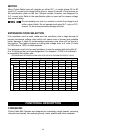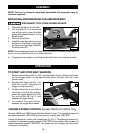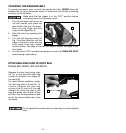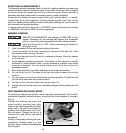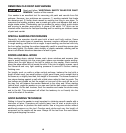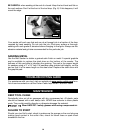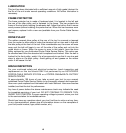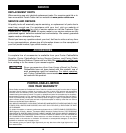
6
1. Hold tool by the insulated gripping surfaces when
performing an operation where the cutting tool may contact hidden
wiring or its own cord. Contact with a “live” wire will make exposed metal
parts of the tool “live” and shock the operator.
2. Use proper safety equipment. Wear safety goggles for eye protection,
wear hearing protection, and wear a protective mask to minimize breathing
in the fine dust created while sanding.
3. Sanding of lead-based paint is not recommended. Lead-based paint
should only be removed by a professional.
4. Always maintain a firm grip on the belt sander handles with both hands to
prevent loss of control.
5. Do not operate belt sander without all guards and covers securely in
place.
6. Wear eye and hearing protection. Always use safety glasses. Everyday
eyeglasses are NOT safety glasses. USE CERTIFIED SAFETY EQUIPMENT.
Eye protection equipment should comply with ANSI Z87.1 standards.
Hearing equipment should comply with ANSI S3.19 standards.
7. Take precautions against dust inhalation. The dust generated by certain
woods and wood products can be injurious to your health. Always operate
machinery in well-ventilated areas, and provide for proper dust removal.
Use wood dust collection systems whenever possible. Also, use face or
dust mask if cutting operation is dusty. Dust mask protection should
comply with MSHA/NIOSH certified respirator standards. Splinters, air-
borne debris, and dust can cause irritation, injury, and/or illness.
8. Some wood contains preservatives which can be toxic. Take extra care
to prevent inhalation and skin contact when working with these materials.
Request and follow any safety information available from your material
supplier.
SPECIFIC SAFETY RULES AND SYMBOLS




